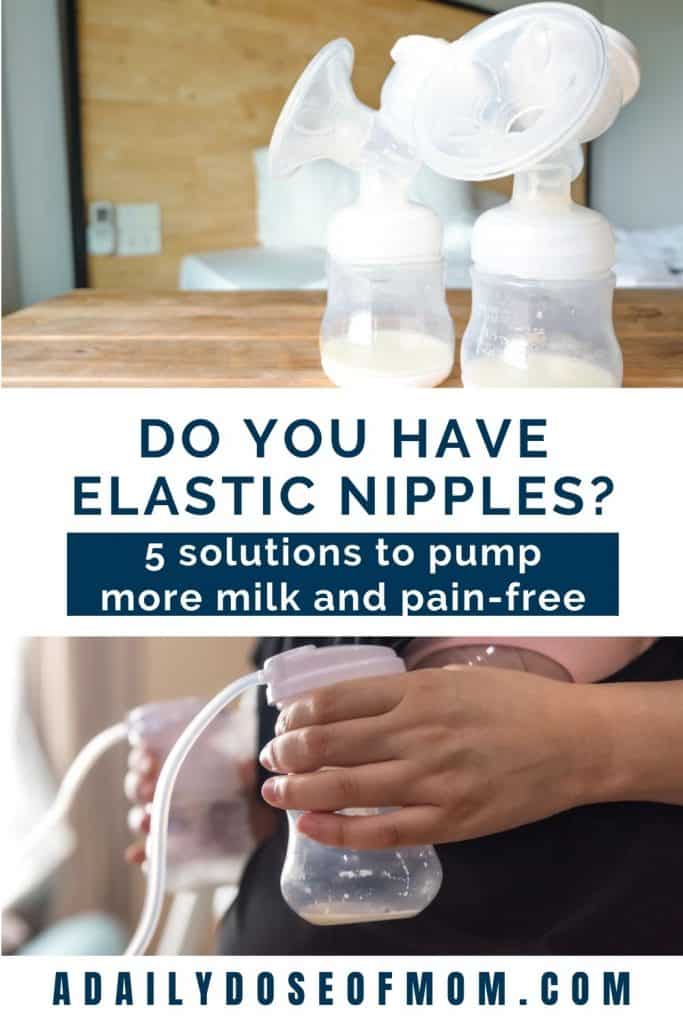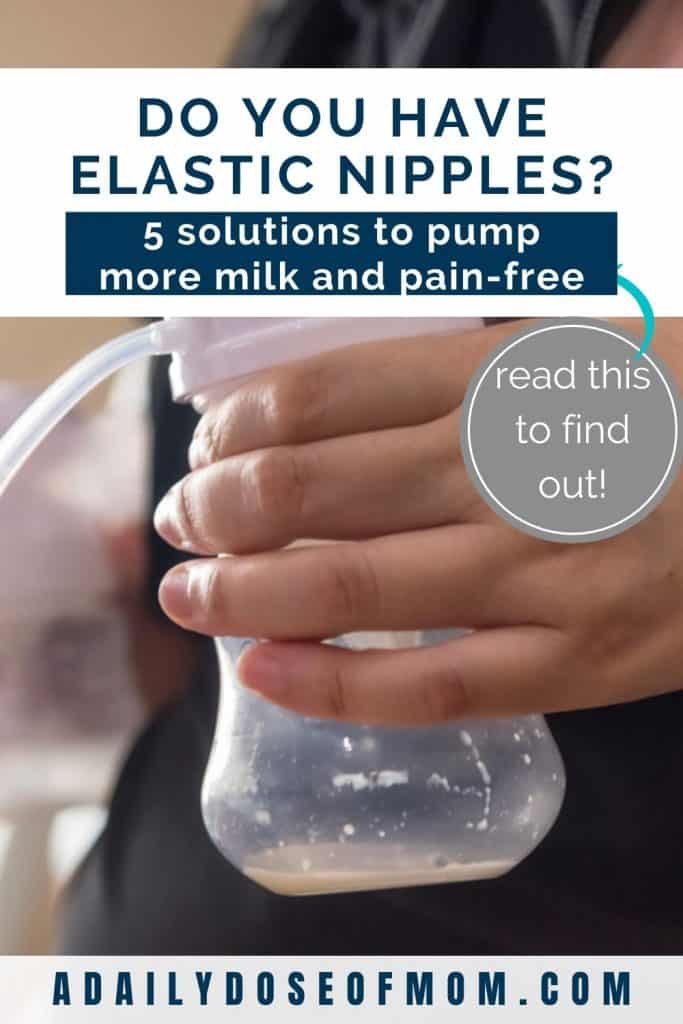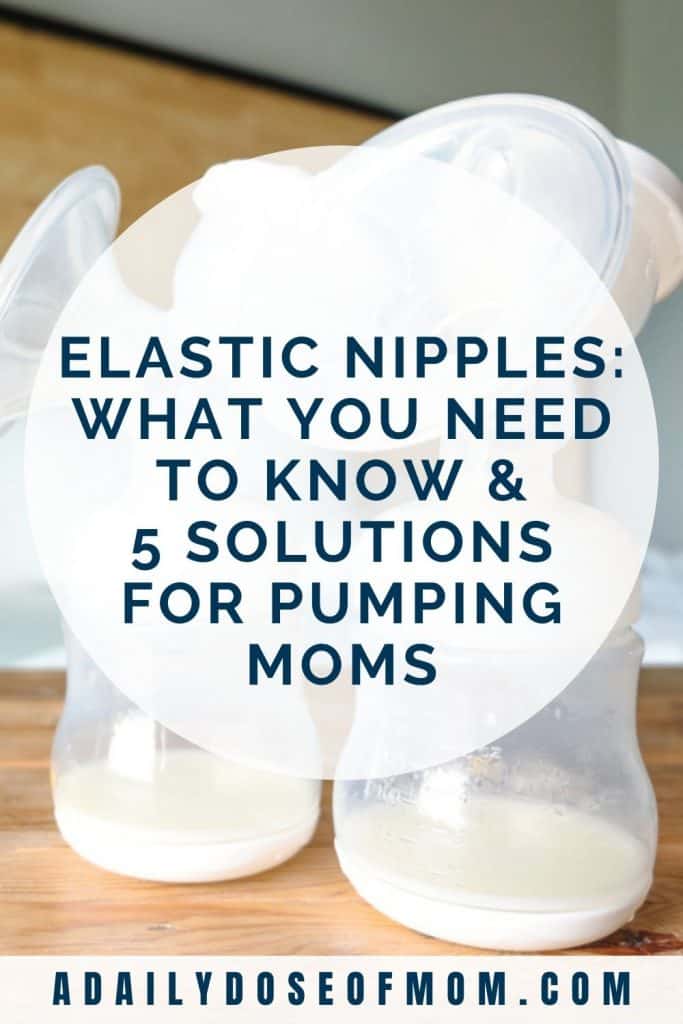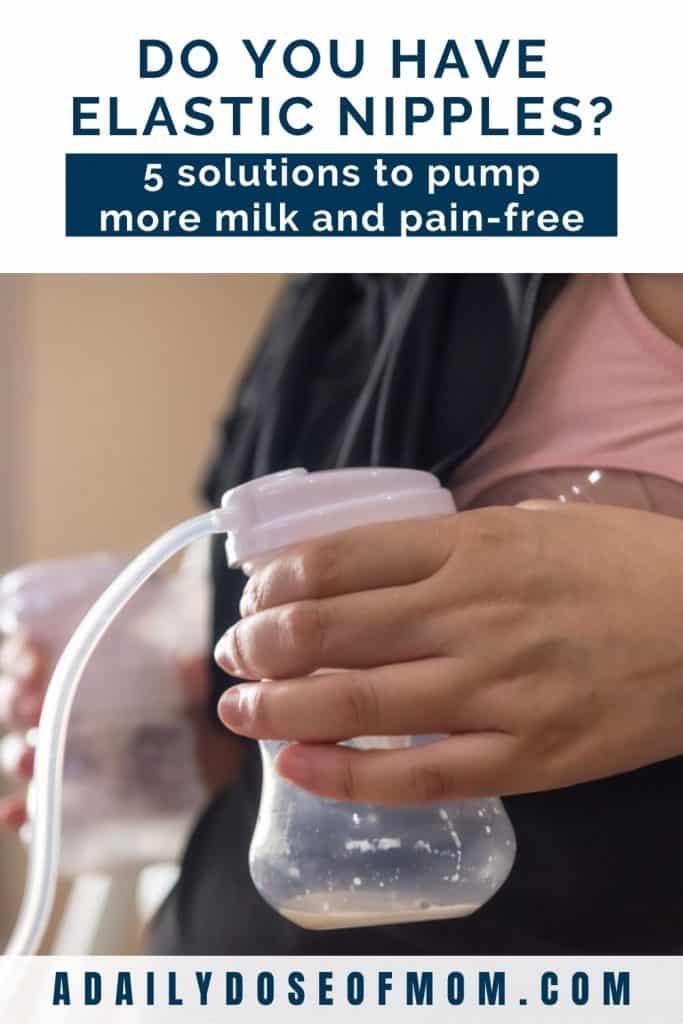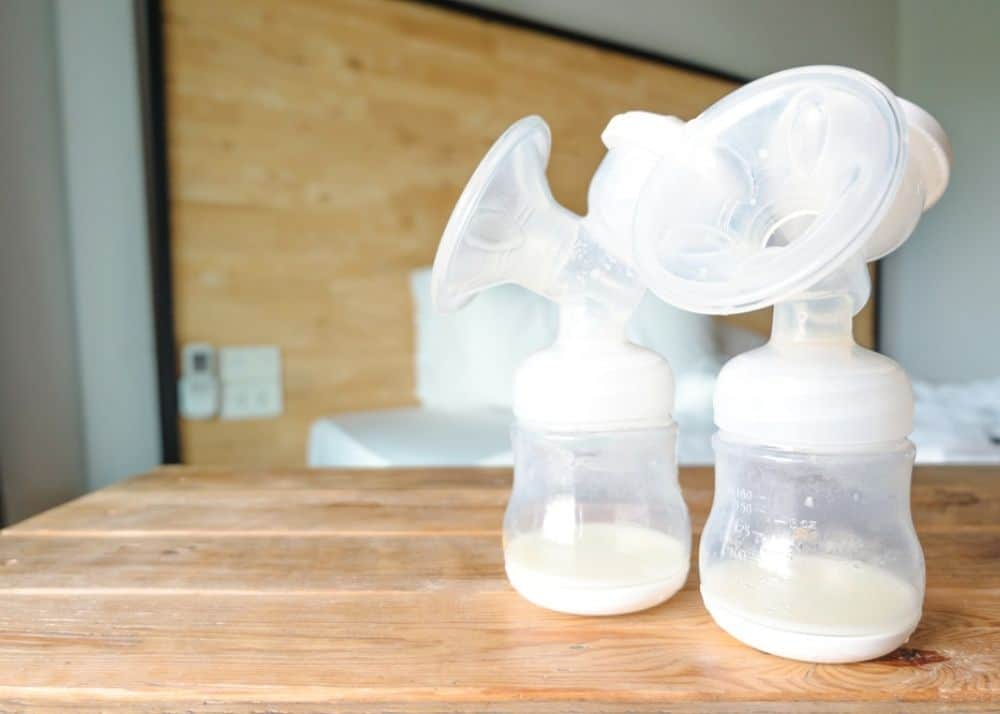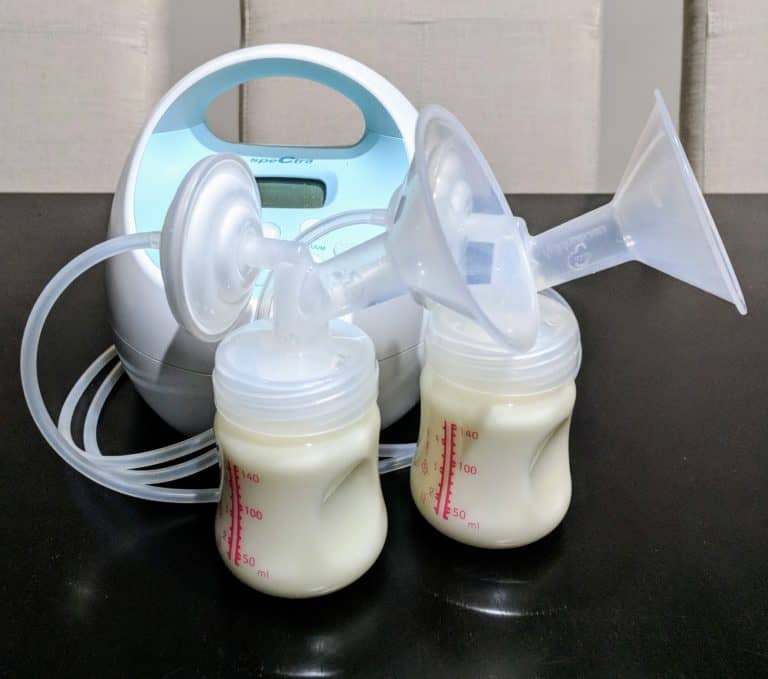Do I Have Elastic Nipples: What Pumping Moms Should Know
Hi there! If you’re a new mom, it can be overwhelming at all the new terms that are coming your way. Exclusively breastfeeding, baby led weaning, silicone breast pump, and the list goes on and on. What about elastic nipples?
If you’ve come to this page, you’re wondering about elastic nipples and if you have them. This may be because you are exclusively pumping and notice a low milk supply. Or you may have pain with each pump session. Don’t worry! This post will guide you through the following: what elastic nipples are, how to tell if you have them, and solutions to help you while pumping.
This post contains affiliate links, which means I receive a small commission, at no extra cost to you, if you make a purchase using this link. Please see my disclosure for more details.
Information presented in this blog post is intended for informational and entertainment purposes only. The views expressed here are the personal opinions of the author only and should be interpreted as such. It is not intended to be a replacement or substitute for professional medical advice.
What are Elastic Nipples
The first thing any mom should know is that the areola (the skin on and around your nipple) is supposed to be stretched during breastfeeding. Nipple elasticity is normal!
Elasticity of the nipple only becomes a problem in the following two situations:
- Too little elasticity causes problems with latching during breastfeeding. This issue can be seen as flat or inverted nipples.
- Too much elasticity causes problems with pumping, which we will get to in the next section.
When a mom is pumping, stretching of the nipple is completely normal. In fact, the nipple should extend about halfway down the tunnel of the flange or slightly past that.
Elastic nipples are those that are stretched a little further. This can be to the end of the flange tunnel or even hitting the backflow protector.
What Does it Mean to Have Elastic Nipples?
Again, I want to reiterate that nipples that stretch are normal! Yet, elastic nipples become a problem when they lead to pain or discomfort during pumping. When pumping, the nipple should move freely in the flange with not too much areola being pulled in. The nipple shouldn’t touch or rub on the sides of the tunnel.
But with very elastic nipples, too much areola tissue is pulled into the flange. This can compress milk ducts and cause redness and soreness. Ouch!

Not only do elastic nipples cause pain while pumping, but they can lead to low milk output. What a double whammy! When the milk ducts are compressed, they are not emptied. Thus, your body gets the signal that it doesn’t need as much milk. Then you start producing less and less. And the cycle continues.
And to top it all off, the compressed milk ducts and not emptying enough can cause clogged ducts. Clogged ducts occur when a milk duct is blocked or not draining enough. If a clogged duct is not relieved, it can progress to a serious infection called mastitis.
Please note: While clogged ducts and mastitis can be caused by elastic nipples, they are beyond the scope of this article. If you have any concerns related to clogged ducts or mastitis, please contact your doctor or lactation consultant.
How Can I Tell If I Have Elastic Nipples?
It’s vital to identify elastic nipples early on in your pumping journey. This is because of all the issues that they can cause.
Consult your doctor or lactation consultant if you think you have elastic nipples. You may notice that your nipples are stretched more than halfway during pumping. You may also notice you are having problems with pain while pumping and low milk output.
Solutions for Elastic Nipples
If you and your lactation consultant determine that you have elasticity of your nipples, do not fret! There are ways to make pumping more comfortable and much more effective.
Solutions for Elastic Nipples Include:
- Check flange size
- Lubricate before pumping
- Decrease vacuum level while pumping
- Use a silicone flange
- Use silicone inserts/cushions
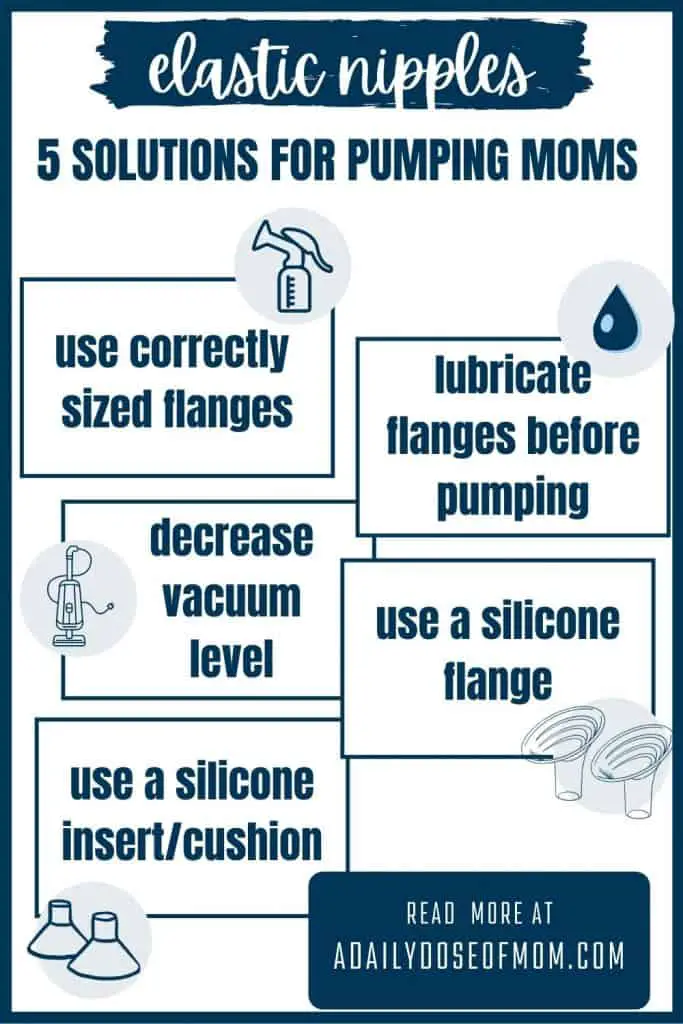
Again, review these options with a lactation consultant.
Check Flange Size
With elastic nipples, the proper flange size is very important. This is so you can have a pain-free pumping session and optimize your milk output.
Here are the steps on measuring your flange size:
- Using a ruler or piece of string, measure the diameter of your nipple in millimeters (mm). Be sure not to include the areola!
- After measuring, add 3-4 mm to find your flange size.
Be sure to measure both nipples as nipple sizes vary. You may end up with different-sized flanges for each breast!

Lubricate Before Pumping
The pain caused by elastic nipples can be relieved by lubricating before pumping. This helps keep the nipple in place and prevents soreness from happening.
You can lubricate your nipples, the sides of your flange, or both! Here are three methods to lubricate before pumping breast milk:
- Breast Milk. Hand-express breast milk before pumping. There’s nothing better than liquid gold for lubrication. Breast milk has antimicrobial properties and is very healing. A bonus to hand expressing is that it will help increase breast milk production. Win-win!
- Coconut oil. Many moms use coconut oil to help lubricate nipples and flanges before pumping. Not only does coconut oil help minimize friction, but it’s great for your skin. And it’s safe for baby to consume! Look for unrefined coconut oil and consider a spray option for pumping on the go!
- Do I Have Elastic Nipples: What Pumping Moms Should Know Another option is using 100% pure lanolin to lubricate before pumping. Found in popular nipple creams, lanolin is super moisturizing. It’s also free of preservatives, parabens, fragrance, or taste. It is important to note that lanolin can be a little thicker than the first two options. This may clog up pump parts and make them harder to clean.
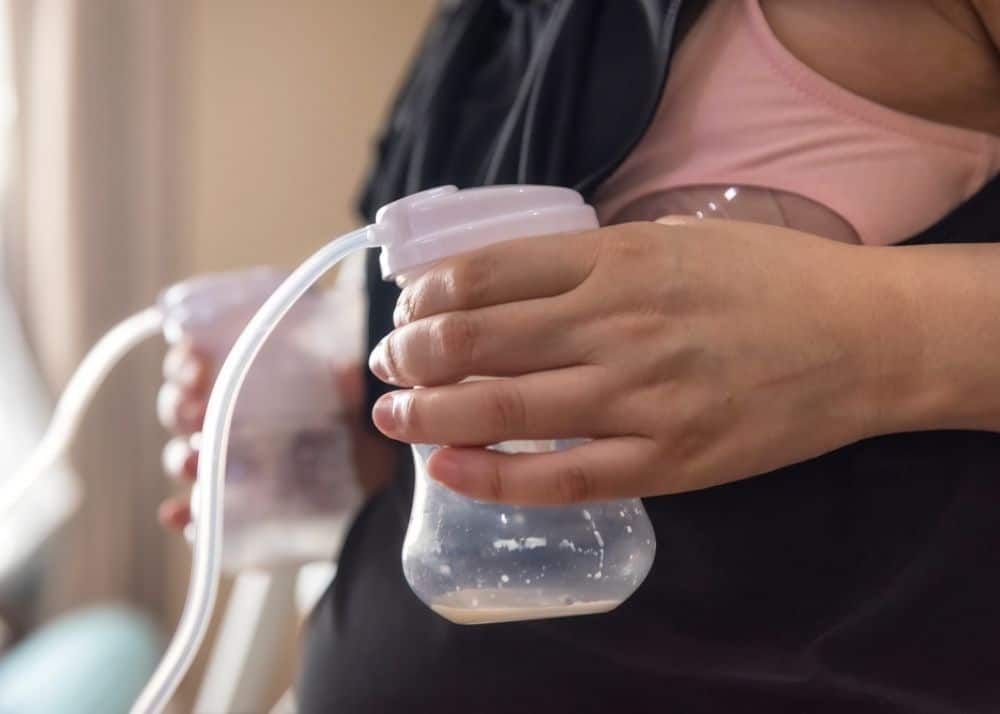
Decrease Vacuum Level While Pumping
When you are pumping, the vacuum level should ALWAYS be set to a level that’s comfortable for you. It’s not a race to get to the highest suction level. Lowering the vacuum strength can help decrease the amount that the nipple stretches. This helps ease the pain and compression of your nipple and areola.
Use a Silicone Flange
If you have elastic nipples, you may consider silicone flanges, such as the ones from Pumpin’ Pals. These BPA-free silicone flanges are made with Elast+Assist Technology™ (EAT). This technology is said to improve milk flow for those with elastic nipples.
The website for Pumpin’ Pals has a very helpful sizing quiz that will suggest a flange size for you! If you say that too much areola is being sucked in when pumping (an indicator of elastic nipples), Pumpin’ Pals will recommend the “Small Set”. This set includes extra small and small silicone flanges as well as a hard plastic medium flange.
Special Note about Pumpin’ Pals
Only the extra small and small silicone flanges have the Elast+Assist Technology™ needed for elastic nipples. The manufacturer states to NOT use lubrication with these silicone flanges.
The silicone flanges from Pumpin’ Pals work with the most popular breast pumps. This includes Medela, Spectra, and Lansinoh. The flange sets for Spectra, Ameda Mya, and Motif Luna include an adaptor that you can use for those breast pumps.
Use Silicone Inserts/Cushions
Another solution for elastic nipples is a silicone insert. The Beaugen Breast Pump Cushions are great examples. These cushions are inserted into your normal flanges and are compatible with most major breast pump brands.
The benefit of these silicone cushions is that they move with your nipple while you pump. Because of the silicone material, the cushion adheres to your skin, so it keeps your nipple in place. This eliminates any friction that can cause pain and soreness.
The Beaugen cushions will also help moms who are between flange sizes. The cushions are 1 mm thick, so it will make a standard flange about 2 mm smaller. For example, the Medela flanges come in 21 mm and 24 mm. If you are a 22 mm, you can get the 24 mm and use these inserts to get a perfect 22 mm match!
Frequently Asked Questions About Elastic Nipples
Final Thoughts on Elastic Nipples
If you experience pain while pumping and suffer from low milk supply, elastic nipples may be the cause. Discuss with your doctor and lactation consultant to make sure. Know that you are not alone and this does not have to be the end of your breastfeeding/pumping journey! Some solutions can be tried that can help make pumping more comfortable for you! Plus, you may be able to increase the amount of milk you pump!
If you have elastic nipples, I would love to hear about your experience and what worked for you. Comment below and let’s chat!
More Articles on Breastfeeding and Pumping
- Spectra S1 versus Spectra S2: What’s the Real Difference?
- How to Use the Spectra S1 and S2: Powerful Settings to Maximize Your Breast Milk Output
- 5 Successful Fixes for Your Slacker Boob to Increase Breast Milk Production
- Why Coconut Oil is an Amazing Remedy for Cracked Nipples While Breastfeeding
- Lipstick Nipple Latch: Do You Have It and How to Fix It

